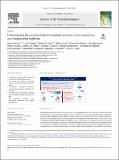Understanding the combined effects of multiple stressors : a new perspective on a longstanding challenge
Abstract
Wildlife populations and their habitats are exposed to an expanding diversity and intensity of stressors caused by human activities, within the broader context of natural processes and increasing pressure from climate change. Estimating how these multiple stressors affect individuals, populations, and ecosystems is thus of growing importance. However, their combined effects often cannot be predicted reliably from the individual effects of each stressor, and we lack the mechanistic understanding and analytical tools to predict their joint outcomes. We review the science of multiple stressors and present a conceptual framework that captures and reconciles the variety of existing approaches for assessing combined effects. Specifically, we show that all approaches lie along a spectrum, reflecting increasing assumptions about the mechanisms that regulate the action of single stressors and their combined effects. An emphasis on mechanisms improves analytical precision and predictive power but could introduce bias if the underlying assumptions are incorrect. A purely empirical approach has less risk of bias but requires adequate data on the effects of the full range of anticipated combinations of stressor types and magnitudes. We illustrate how this spectrum can be formalised into specific analytical methods, using an example of North Atlantic right whales feeding on limited prey resources while simultaneously being affected by entanglement in fishing gear. In practice, case-specific management needs and data availability will guide the exploration of the stressor combinations of interest and the selection of a suitable trade-off between precision and bias. We argue that the primary goal for adaptive management should be to identify the most practical and effective ways to remove or reduce specific combinations of stressors, bringing the risk of adverse impacts on populations and ecosystems below acceptable thresholds.
Citation
Pirotta , E , Thomas , L , Costa , D , Hall , A J , Harris , C M , Harwood , J , Kraus , S , Miller , P J , Moore , M , Photopoulou , T , Rolland , R , Schwacke , L , Simmons , S , Southall , B & Tyack , P L 2022 , ' Understanding the combined effects of multiple stressors : a new perspective on a longstanding challenge ' , Science of the Total Environment , vol. 821 , 153322 . https://doi.org/10.1016/j.scitotenv.2022.153322 , https://doi.org/10.1016/j.scitotenv.2022.153322
Publication
Science of the Total Environment
Status
Peer reviewed
ISSN
0048-9697Type
Journal item
Description
This work was supported by the Office of Naval Research [grant numbers N000142012697, N000142112096]; and the Strategic Environmental Research and Development Program [grant numbers RC20-1097, RC20-7188, RC21-3091].Collections
Items in the St Andrews Research Repository are protected by copyright, with all rights reserved, unless otherwise indicated.

